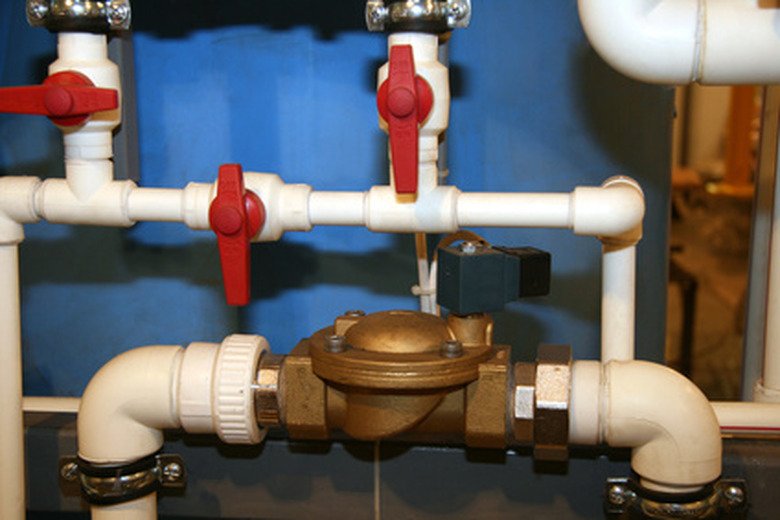Differences Between A Ball Valve & A Butterfly Valve
Ball valves and butterfly valves are both quarter-turn (90-degree turn from fully opened to fully closed) rotary valves. The family of rotary valves also includes cone and plug valves. They are used to control the flow of most types of gases or liquids across a wide range of temperatures and pressures. Butterfly and ball valves are both popular for their relatively low cost, long service life and dependability. However, there are a few differences to help the user choose between them.
Ball Valves
Ball Valves
A ball valve is (in simplest terms) a ball with a hole running through it. Turning the valve positions the hole to either block, partially block or complete the line of flow through the valve.
Advantages of ball valves include a good seal, or little to no leak-by when the valve is fully closed. A ball valve will turn regardless of the pressure on the supply side. If the hole through the valve is as large or larger than the supply pipe inner diameter, the ball valve will offer essentially no pressure drop or restriction when fully opened.
Ball valves are often used in high pressure liquid or gas lines, usually 6 inches or less in diameter, where a complete cut off is important.
Butterfly Valves
Butterfly Valves
A butterfly valve is a disk mounted on a rotating shaft. When fully closed, the disk completely blocks the line. When fully opened, the disk is at a right angle to the flow of gas or liquid.
One of the advantages for butterfly valves is that they are relatively inexpensive to build and maintain. They are the most common valve for large volume water systems such as municipal water works. They can be used for dirty liquid applications such as sewage or controlling river water.
The butterfly valve disk is still in the valve flow line when fully open, so there will always be a pressure drop across a butterfly valve. Also, if the pressure difference across the butterfly valve is great, it may be difficult to open the valve. Some applications require a bypass valve to bring the pressure difference down before large butterfly valves can operate.
Differences
Differences
Butterfly valves are less expensive and generally lighter weight than other types of valves. A butterfly valve for a large diameter pipe is much smaller than its ball valve equivalent.
Butterfly valves do not seal as completely as ball valves and are rarely used to control gas flows. Ball valves provide a reliable seal.
In high pressure applications, the ball valve will provide superior cut-off characteristics as well as having no trouble turning or needing a pressure-balancing scheme.
Cite This Article
MLA
Donahue, Christopher. "Differences Between A Ball Valve & A Butterfly Valve" sciencing.com, https://www.sciencing.com/list-6722176-differences-ball-valve-butterfly-valve/. 7 August 2017.
APA
Donahue, Christopher. (2017, August 7). Differences Between A Ball Valve & A Butterfly Valve. sciencing.com. Retrieved from https://www.sciencing.com/list-6722176-differences-ball-valve-butterfly-valve/
Chicago
Donahue, Christopher. Differences Between A Ball Valve & A Butterfly Valve last modified March 24, 2022. https://www.sciencing.com/list-6722176-differences-ball-valve-butterfly-valve/
